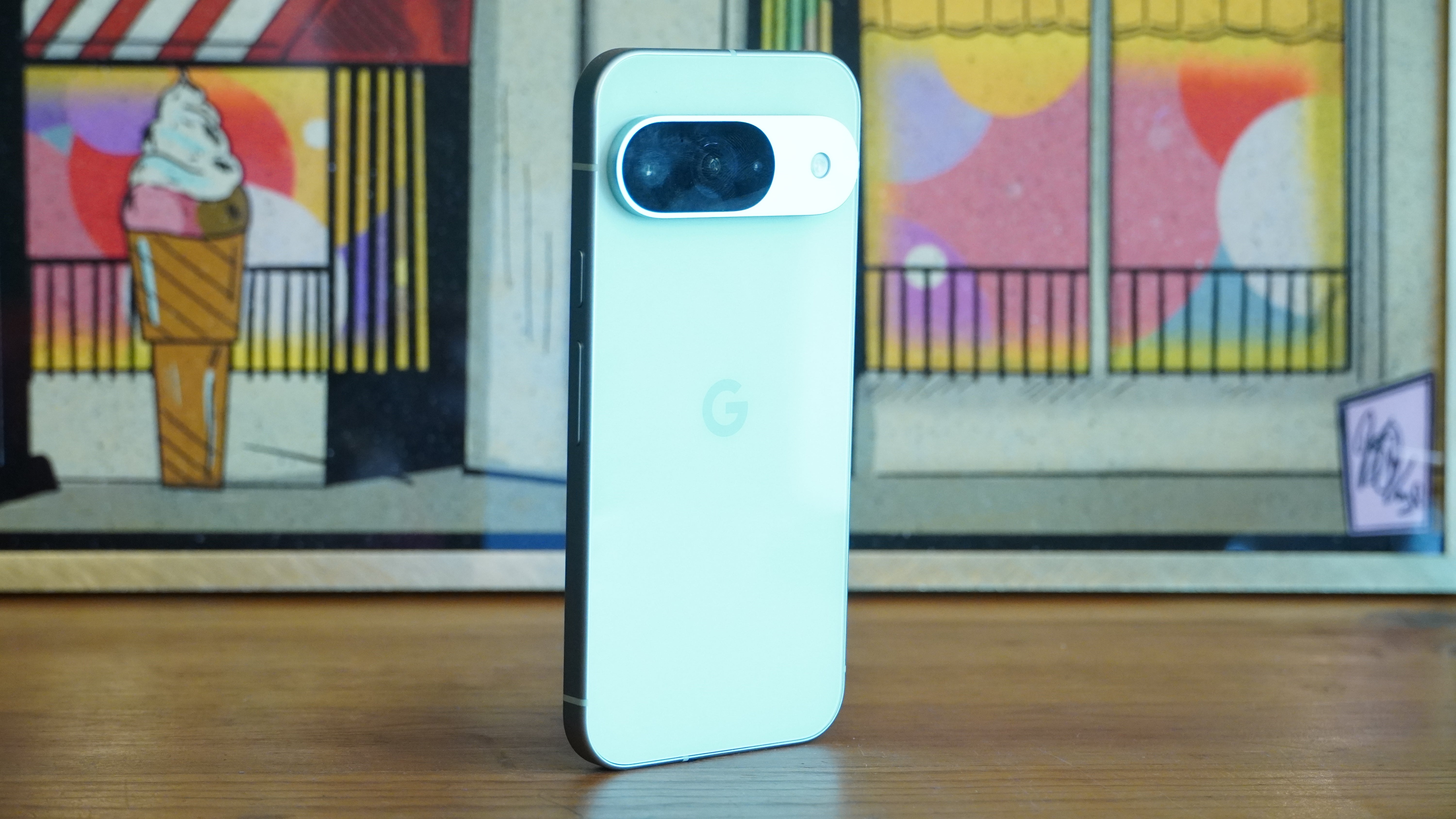Google is back with a new round of phones, and the Pixel 9 sits at the base of the stack. It features a handful of upgrades over its predecessor, the Pixel 8, and most of them are fairly minor. That may make it a slightly tougher sell when Google has bumped up the starting price by $100, bringing the base model to $799. But it has some extra memory, a new ultra-wide sensor, and access to more AI capabilities that could make it worthwhile for some. Plus, the snazzy new look of the Pixel 9 isn’t a half-bad change itself. But with the Pixel 9 Pro offering a handful of extra hardware upgrades, $240 worth of Google One AI Premium subscription, and the same dimensions at $999, the Pixel 8 is in a somewhat troubled spot.
Google Pixel 9 – Design and Features
If you’ve seen a new Pixel phone anytime in the last four years, the Pixel 9 isn’t going to surprise you too much. It shows Google’s continued refinement of the design, and it comes together a lot better than the Pixel 6 that introduced the revamped camera bar design. The new camera bar here sits like a pill-shaped, raised plateau on the back of the phone, no longer sloping down to meet the sides of the chassis.
The Pixel 9 is a smooth little device. The metal frame curves gently around each corner and bends up to the flat front and back glass for a feel that doesn’t poke or jab anywhere. The phone feels sturdy in the hand but is light and easy enough to hold. Alas, even with its modest 6.3-inch display, it still takes some dexterity to navigate one-handed. While Google has trimmed the bezels every so slightly compared to the Pixel 8, enabling this slightly larger screen, it also increases the size of the phone slightly, with the Pixel 9 sitting noticeably taller and feels thicker in the hand than the Pixel 8. The flat metal sides lend to that thicker feeling compared to the Pixel 8, which had a rounded frame. This new design pushes the Pixel design ever closer to recent iPhones.

The phone is built for a tough life, featuring Gorilla Glass Victus 2 on both sides and offering IP68-grade protection against dust and water. It should be able to withstand small falls and extended dips into water, though I’d still recommend avoiding drops without a case. And even though the screen is hardened, it can get scratched, as my test unit is already showing some minor blemishes after only a short while in service.
For the Pixel 9, you get a matte metal frame and a glossy back. As I’ve seen on other Pixels, the glossy back looks good while clean but can quickly turn sour with fingerprints all over it. The phone comes in what are essentially black, white, pink, or light green.
Power and volume buttons sit on the right side of the phone, where they raise subtly up from the edge. They offer firm clicks. But because they sit so centered on the side, they don’t lend themselves to serving as handy shutter buttons for photography (apart from selfies).
Google has included two speakers, as it has with recent phones, setting one in the earpiece and porting the other out of the bottom of the phone. These are reasonably loud and readily pass the test of playing a podcast loud enough for me to hear while I’m in the shower. The SIM card tray has shifted to the bottom of the phone as well, making for a cleaner appearance along the sides and making it more obvious where the speaker on the bottom is (the Pixel 8 had two slots on the bottom, but only one was a speaker).
The bottom of the phone houses the USB-C port for charging, which can charge faster than before if you have a 45-watt charger handy (which will only deliver 27-watts to the phone). The USB-C port also supports display output with DisplayPort or HDMI cables, which is an upgrade over early Pixels and only recently introduced for the Pixel 8 lineup.
The Pixel 9’s display is a great one, although not Google’s best — that distinction is reserved for the Pixel 9 Pro and Pro XL. It sits flat on the front of the phone, flush with the edges, and boasts a 1080 x 2424 resolution which makes it plenty sharp for a 6.3-inch screen. The OLED panel can save energy running at 60Hz or go smooth at 120Hz, automatically shifting between the two, though it defaults to a locked 60Hz for some reason. While the Pixel 8 was already bright, the Pixel 9 goes brighter still with a rated peak of 2700 nits. Even on a bright summer day, that brightness ensures the screen is easy to see, though you’ll still need to make sure the sun isn’t directly reflected. All in all, it’s a great looking display for general use and videos alike.
Google continues to offer a fingerprint scanner built underneath the display glass, and though it’s reportedly 50% faster this year, in side-by-side testing against a Pixel 8, I couldn’t see any speed difference. The selfie camera is also built into the display area, cutting out a hole near the top of the screen, and this year it’s actually taking up more space.
Hiding within the Pixel 9's hardware is also a new connection method: satellite. Like the iPhone, the Pixel 9 now includes a satellite SOS function if you dial 9-1-1 outside of Wi-Fi and network range. The service is included for free for 2 years after activating the phone.
That said, at the time of testing, the feature did not appear in the settings.
Google Pixel 9 – Software
The Pixel 9 comes awkwardly running Android 14 just like the Pixel 8 before it. It’s a simple and stylish operating system, and while I have little issue with it, I do find Google’s customization of it doesn’t make great use of space – all but refusing to go information-dense. As it did last year, Google is again offering 7 years worth of updates for the new phones. Of course, with the Pixel 9 launching before Android 15, that may mean we won’t see it get updates to Android 22 down the line.
Where the Pixel 9 gets differentiated is in just how much more focused Google is on AI this year. It introduced a handful of features that are almost worth a full review on their own. Many features are tied to the cameras, but Google has hyped up a few other features like Pixel Studio, Screenshots, and Gemini.
That said, the AI’s capabilities are a bit all over the place, with varying consistency. I tried testing the Screenshots app on both the Pixel 9 and 9 Pro by asking each phone how many days my girlfriend was working next month: The 9 Pro sourced a screenshot of my calendar and gave me an answer while the Pixel 9 drew a blank. But when I changed the phrasing of my question just to ask how many days she’d work “in September,” the Pixel 9 suddenly could answer despite using the same screenshot of my calendar that the Pixel 9 Pro had in both instances. And for the record, neither device actually provided a correct answer. Asking about a funeral coming up, the AI pulled up a calendar screenshot with the relevant information but then incorrectly said “A funeral is coming up on September 10th”, a day that has no calendar entries in the screenshot. Perhaps the AI knows something I don’t, but I really hope otherwise.
Another fun tool, theoretically, is the Pixel Studio app, an AI image generator that lets you input prompts and request certain styles of imagery. While this could be fun for custom reactions to text, I consistently found it didn’t quite understand requests, and in almost all cases couldn’t accurately include what I asked for in text bubbles. Generally, it spelled things wrong, included extra words, and in one case, even opted for a different language (which looked like a sloppy attempt at Mandarin).

And then there’s Gemini, which fills in for Google Assistant and adds yet another separate channel for accessing AI tools. Asked to generate an image, Gemini will, but it will operate distinctly from Pixel Studio. Instead of making one image, it will generate and present several at once. It also won’t create images with text. Gemini Live sits as yet another layer, offering a conversational method of interacting with Google’s AI, and it requires a second press to access after calling up Gemini.
I find the partitioning between these tools annoying. Gemini Live won’t tap into Screenshots or Pixel Studio, so you can’t fluidly ask it to pull screenshot data up or generate an image. And then there are the inconsistencies in how you interact with the tools: Gemini Live is all voice and the Screenshots app lets you ask for things with your voice directly, but Pixel Studio requires typed prompts (though you can use GBoard’s dictation to write those typed prompts).
Where these AI tools are meant to lift burdens off of us, there’s a burden of its own in remembering which tool is available, how to get to it, and what it will do. And the need to reframe prompts in the hopes of getting the desired output leaves them in shaky territory.
Google Pixel 9 – Gaming and Performance
The Pixel 9 is a fast enough performer. It runs on an upgraded chip, the Tensor G4, which is a minor upgrade from the Tensor G3 found in the Pixel 8 lineup. This model comes with a memory upgrade to 12GB though, which is important for enabling the AI features that rely on memory.
In practice, the system was reasonably quick for its AI tasks, though there’s a brief delay of a second or two for many, like image generation and responses to Screenshot queries. Meanwhile, the performance for gaming is respectable. Running Zenless Zone Zero, the phone readily kept it up at High settings and a smooth 60fps with minimal stumbles. More impressively, it managed to do so without getting exceedingly hot. After playing for over an hour, the phone wasn’t uncomfortable to hold. The storage also lets the game load quickly.
In everyday use, the performance is more than up to snuff, launching apps and navigating the phone quickly. While direct benchmark numbers will have to wait (Geekbench and 3DMark were unavailable for the phone during testing), it’s a safe bet that the Tensor G4 is still lagging a ways behind the Snapdragon 8 Gen 3 for general CPU and GPU performance, as Google has put more emphasis in its AI processing.
Connectivity is fast as well. I saw the 5G connection readily hit over 300Mbps even in lackluster conditions, and Wi-Fi 7 has the phone ready for fast networks now and in the future.
With its 4700mAh battery, the Pixel 9 is readily able to last all day, even with a bit of photography, gaming, and movie-watching mixed in.
Google Pixel 9 – Cameras
The Pixel 9 doesn’t fall too far from the premium tier with its camera, getting the same main and ultrawide systems as the Pro models. These are fairly similar to 2023’s offerings as well, with only the ultrawide seeing much change, shifting to a wider aperture and slightly narrowed FOV.
Here are the cameras the Google Pixel 9 packs:
- 50MP (binned to 12.5MP) Wide, 1/1.31" sensor, f/1.68, Laser AF, OIS, EIS
- 48MP ultrawide (binned to 12.5MP), 1/2.55" sensor, f/1.7, 123-degree FOV
- 10.5MP Selfie, f/2.2, 95-degree FOV
Predictably, the Pixel 9 has a great main camera. Running around at the golden hour, I found it captured some truly lovely shots. Its detail is sharp across most of the image, and with a rather wide field of view, it crams a lot into every shot. Colors are poppy where they should pop and natural where they should be. Neon lights glow and the sun shimmers while stone, wood, and rusted out metal remain properly dull.
The sensor is capable enough in low light, but it can struggle a bit with noise that creeps into underexposed areas of the shot, especially if they’re largely flat colors. This results in some unsightly artifacts.
With no telephoto sensor, the Pixel 9 is also left to rely on digital zoom with its main sensor. Google’s processing is good enough for satisfying 2x zoom, and zooming in before taking a photo does produce clearer detail than trying to zoom in on a 1x photo after the fact. But going up to 5x or beyond, the picture simply becomes too soft to use.
The ultrawide is a strong pairing for the main sensor. It crams a lot into each shot thanks to its wide field of view. With an aperture very close to that of the main sensor, it can also perform admirably in similar lighting conditions, and this only makes it that much easier for the sensor to provide consistency with the main sensor. Back-to-back shots between the two exhibit very similar coloring and exposure. This makes it a solid extension of the main sensor. It’s quite effective for macro shots as well, getting right up close to even small subjects and capturing sharp shots.
Even though the Pixel 9 didn’t get the upgraded selfie camera of the Pro models, it’s still a nice little shooter. It’s wide angle helps with framing or getting more friends into a shot, and it snaps sharp, vibrant photos.
Mark Knapp is a contributing freelancer for IGN with over 10 years of experience covering a diverse range of tech and electronics, including everything from gaming PCs and peripherals to hi-fi home theater gear and electric bikes. His work has included hundreds of hands-on reviews, such as his testing of many of the latest smartphones for IGN. He’s worked with many other publications over the years, including PCMag, CNET, TechRadar, Reviewed, and CNN Underscored. When Mark isn’t writing up reviews, he’s still probably working, as the job of a reviewer knows no definite schedule. He’s often playing the latest competitive FPS with friends while testing gaming peripherals, cruising the streets on an e-bike for testing with earbuds under evaluation, putting a recent projector to task with his bad movie club, or posting up at the gym for yoga or rock climbing — his two main hobbies that involve actually unplugging. You can find Mark on Twitter @Techn0Mark or BlueSky at @Techn0Mark.








